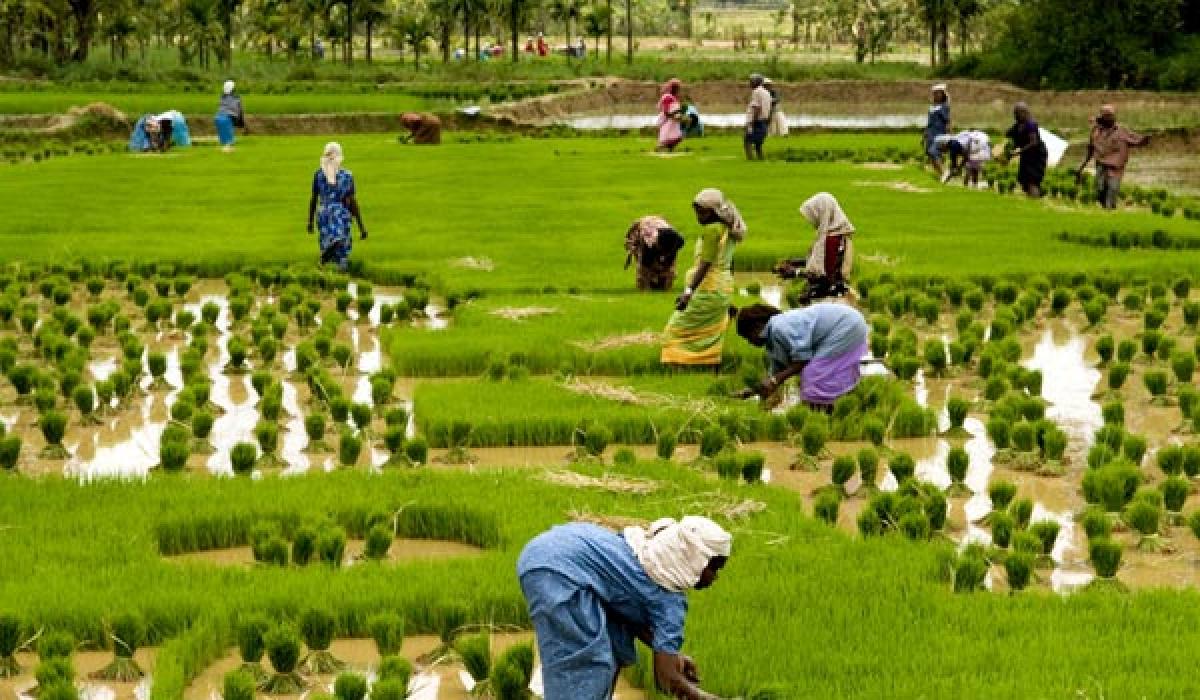Live
- Salesforce Faces Margin Slowdown Amid Strong Q3 Results
- Nani Wins Mega Fans’ Hearts with His Support for Chiranjeevi’s New Film
- Infusion Nursing Society Hosts 12th Annual Conference at Yashoda Hospital, Hyderabad
- HDFC Bank to Organise 16th Annual Blood Donation Drive on December 6, 2024
- Musk, Ramaswamy Urge End to Daylight Saving Time Clock Changes
- IMT Hyderabad Hosts Grand Convocation Ceremony to Celebrate Graduating batch of 2022-2024
- Coromandel International and International Fertilizer Development Center Partner to Advance Fertilizer Innovation and Sustainable Agriculture in India
- Formulate plans to achieve goal of 'one family, one entrepreneur': CM tells officials
- Toyota Kirloskar Motor Concludes 32nd iCARE Activity, Strengthening Commitment to Community Development
- A grand celebration of love: Naga Chaitanya, Sobhita Dhulipala tie the knot
Just In

The 25 years of reforms have brought about significant changes in the economy and society having a painful impact on the lives and livelihoods of the agrarian labour. The shift to commercial crops, monetisation of all the transactions, etc, have a bearing on the working conditions of the rural poor.
Agricultural labour constitute the most depressed and the most deprived sections of society. They have least immunity to the adverse climatic conditions or retrograde economic policies. Unfortunately, they figure least in the policy debates or public discourse.
The 25 years of reforms have brought about significant changes in the economy and society having a painful impact on the lives and livelihoods of the agrarian labour. The shift to commercial crops, monetisation of all the transactions, etc, have a bearing on the working conditions of the rural poor.
As per 2011 Census, there were 98,23,264 agricultural workers in undivided Andhra Pradesh, constituting 11.60 percent of the total population of the State.
In other words, agricultural labour comprise 33.83 per cent of total worker population in undivided Andhra Pradesh. The sheer size of their population should at least make their concerns important. But, the social and economic marginalisation of these impoverished sections make their voice unheard.
Rapid strides in agriculture need not necessarily lead to better land relations. This is evident from the fact that in the present state of Andhra Pradesh, Guntur has the highest congregation of agricultural labour population. In fact, studies reveal that there is a greater concentration of agricultural worker population where irrigation facilities are better and commercial cultivation is rampant.
The census data reveal that while the cultivator population is declining, the agricultural worker population is rising, indicating a trend towards land alienation due to varied reasons. It also reveals the growing pauperization of agricultural communities.
Swelling ranks of agri labour
The lower levels of growth in agricultural sector are turning the small and marginal farmers into landless agricultural workers as they get alienated from the unremunerative agriculture.
The artisan communities are losing their livelihoods due to the modernisation of the economy. For instance, extensive use of plastics made pottery redundant. The flood of machine-made gold ornaments made the goldsmith deprived of livelihoods. Such artisans who constitute a large chunk of rural population are swelling the ranks of agricultural labour.
While the sagging agrarian sector is displacing farm labour, the manufacturing sector is unable to absorb the additional work force. This is further worsening the incomes of agricultural labour as a large population competes for smaller cake.
The inadequate generation of rural non-farm employment increases the stress on agriculture, further making dent into the livelihoods and incomes of agricultural workers.
Feminisation of labour There is a trend towards feminisation of agrarian labour as men shift to better occupations. Estimates suggest that women constitute more than 70 per cent of agricultural worker population.
The mechanisation of agriculture is also leading to the feminisation of labour as machines replace men. But the increasing number of women agricultural workers should not be confused with the economic empowerment of women as women are not equally paid. Women are less organised and have relatively lower bargaining power vis-a-vis land-owning classes in a rural society.
As the agriculture is increasingly non-remunerative, more number of male agricultural workers are migrating to urban areas for better livelihood opportunities, thus increasing the presence of women workers in agriculture.
Impact of tenancyThere is a growing trend of tenant farming especially in irrigated and delta areas. As the cultivation of land is associated with social stature, agricultural labour are increasingly opting for tenant farming, making them vulnerable to rapacious market forces operating in agricultural sector.
The agricultural workers are increasingly exposed to the vicissitudes of agricultural economy. As they do not have any record of rights and social security protection, their access to State relief measures is also limited. As the land-owning classes migrate to the urban areas, the tenancy is on the rise.
The economic reforms created a large land market. Land including agricultural land is increasingly attracting speculative investment. This is resulting in absentee landlordism.
As a result, more and more number of agricultural workers are taking up tenant farming. The commercial cultivation is resulting in the spread of tenancy farming even to dry land areas. But what is emerging is only a poor farmer tenancy.
Eroding livelihoodsThe mechanisation of agriculture is eroding the livelihood opportunities for agricultural labour, though productivity and crop intensity has increased. Thus improved agricultural growth need not usher in better incomes or income-earning opportunities for agricultural labour.
In fact, multiple cropping should increase agricultural employment. But mechanisation and modernisation of agricultural operations are resulting in intensity of cropping. As a result, agricultural workers are squeezed but not gainfully employed. The land owners are even preferring migrant workers to suit the intense farming.
By:K Nageshwar

© 2024 Hyderabad Media House Limited/The Hans India. All rights reserved. Powered by hocalwire.com







